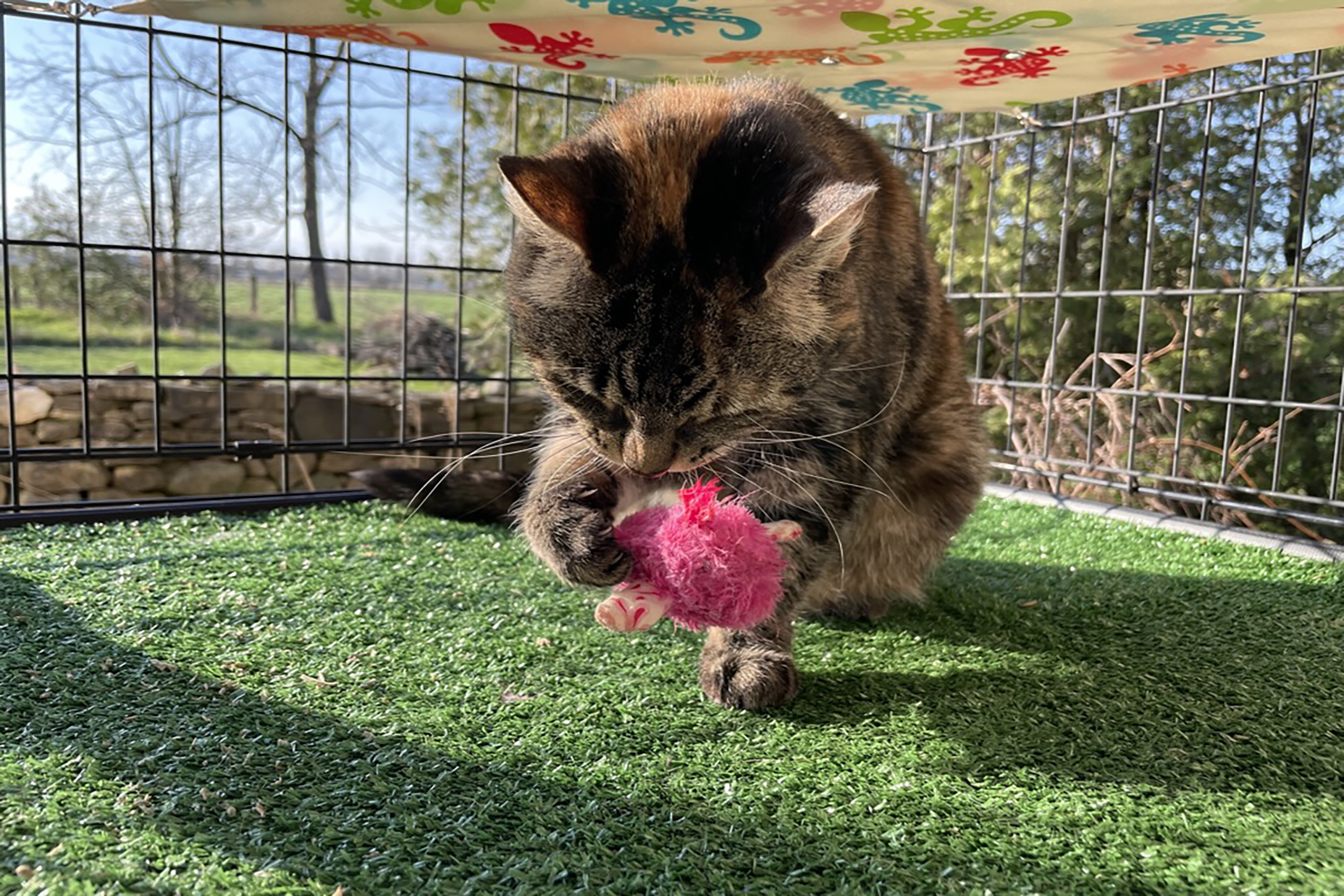WELLINGTON COUNTY – Most of our canine companions go outside multiple times a day – a walk around the neighbourhood, playing in the backyard, visiting the local dog park – but their kitty cat counterparts rarely have the same opportunities.
The topic of allowing cats to roam outdoors is a controversial one with fair arguments to be made for both sides. Outdoor cats tend to be more active and have the opportunity to satisfy their natural prey drive, but are at considerably increased risk for injuries, parasites, infectious diseases, and, of course, getting lost – not to mention the significant dangers outdoor cats pose to songbirds and other wildlife.
It’s generally safer to simply keep cats indoors but with the current pet obesity epidemic and the high prevalence of stress-related feline behavioural issues, giving our indoor cats a breath of fresh air can benefit their health and wellbeing.
Of course, there’s the obvious option of taking your cat out on a leash and harness for supervised play outdoors.
Taken to the extreme, some cats can even adapt to become adventure cats, experiencing all aspects of the great outdoors – even camping and canoeing – from the safety of a cat backpack and a well-fitted harness. While these are excellent ways to spend quality bonding time with your kitty cat companion, they do require a significant commitment and may not be suitable for cats with timid personalities.
Enter the “catio.”
Essentially an enclosed patio for your cat, catios are an ideal solution to allow safe daily outdoor access for our feline companions. Catios can range from simple stand-alone enclosures to elaborate customized structures complete with tunnels and multiple levels.
A repurposed large metal dog crate placed in a sheltered spot outdoors makes for an easy, inexpensive catio option. A nice advantage to this solution is that it can be moved around the yard to give the cat different spaces to experience.
However, this arrangement requires that the cat be safely transported to and from the catio and food, fresh water, and a litterbox should be provided since the cat cannot freely access these amenities. With a stand-alone catio structure, close supervision is needed to ensure the cat does not become stressed.
Since we all know that cats like to set their own schedules, the “purr-fect” catio set-up allows for the cat to access the space on their own. With a bit of creativity, a catio can be strategically installed to incorporate an existing window or door and some dedicated cat owners might even consider making a hole in the wall to accommodate a direct access catio.
All these approaches can be further customized with a lockable or microchip-activated pet door to control your cat’s access to the space; commercial pet door window and door inserts are available to accommodate just about any scenario.
Professional contracting companies can be hired to create the catio of your cat’s dreams with elaborate tunnel systems guiding your cat through nearby gardens and tree canopies.
For those looking for a fun project, DIY blueprints and designs are available online or you can design your own catio from “scratch.”

Dr. Kirsten Graham operates Rockwood-based Graham Mobile Veterinary Weight Management Services, a house call practice dedicated exclusively to managing obesity in dogs and cats. Submitted photo
For a budget-friendly option, the stand-alone dog crate concept can be modified into a direct access catio by attaching the unit to a window or door frame, filling in any gaps with plywood or plexiglass.
Regardless of the design, any catio structure should be inspected carefully and regularly to ensure it is safe and secure to prevent injury or escape.
After the basic catio structure is in place, let the creative juices flow. Catios can be enriched by creating multiple levels for cats to climb and perch on, adding scratching surfaces and hiding places, and of course, topping it off with some of your cat’s favourite weather-resistant toys.
Even feline furniture, such as cat beds, miniature hammocks, and doll- or child-sized chairs, can be incorporated. For the final touch, solar lighting can be added for the ultimate ambience: catio lanterns.
The experience of one recent catio convert highlights how beneficial safe access to the outdoors can be for a cat’s quality of life: “Within days of installing the catio, our cats became more interactive with us and started to get along better with each other. They became more playful, showing interest in toys they had previously ignored for years.
“The cats spend hours each day on the catio – usually taking turns but occasionally sharing the space – watching the birds, sleeping in the sun, and chasing the occasional wayward bug that happens to wander into the enclosure. We regret not installing one years ago.”
For more information visit thehealthierpetwithin.ca.




